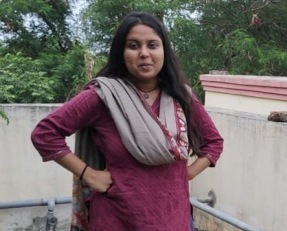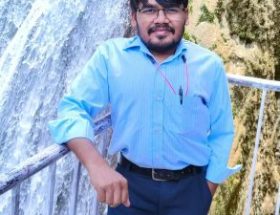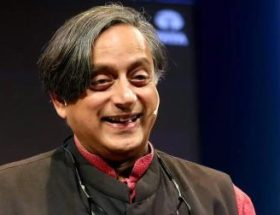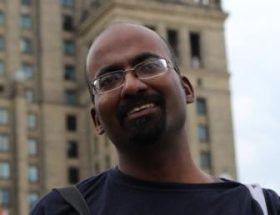Vaishali Khandekar
Recently, a question raised by a student at JNU in a talk by Gayatri Chakravorty Spivak has raised a debate over academic spaces and social media. The talk organized at Jawaharlal Nehru University was about Du Bois, an eminent African activist. A question raised by Kumar, an MA sociology student belonging to a Dalit family, about Spivak’s own positionality remained incomplete when he was interrupted by her regarding the correct pronunciation of Du Bois.
As a response to this, Spivak gave an interview to The Hindu. This article examines the interview and deliberates upon the responses provided by her.
Spivak begins her interview with quite a cryptic term and says that Kumar had not identified himself as a Dalit, and therefore she thought he was a ‘Brahminist as he identified himself as a founder of a Brahmin Studies Institute’. Later, she says that as an old female teacher confronting a male student, and especially since she had not been given the information that he was Dalit, her wounded remark that she did not want to hear this question was a gesture of protest. By this time, she has called Kumar two things: speculatively a Brahminist and now a Dalit. And Spivak maintains her position as an old female teacher. Can old female teachers be anything else? Do old female teachers have caste? Old female ______ teacher. For some reason, Spivak does not fill in the blank.
She later mentions another sluggish, inactive, but intentional term: ‘non-Dalits’. What does non-Dalit mean? Is it a Savarna creation to define them without defining them? I will not study myself; whenever I do have to talk about us, it will be by using your name. What do these terms mean? Where do they come from? What are they hiding? What is the unwillingness to name oneself and insist on the ‘Other’ to identify themselves?
Spivak is not a powerless old woman teacher, as she would like to portray herself in this context. Spivak shared a joke with the audience. Victims do not have hundreds of people; a trail of audience members is brimming and overflowing. I fail to see how it could be a ‘wounded remark’ when hundreds of audience members giggle with you at the expense of a Dalit student. A gesture of protest cannot be against a single young male student by an old, established (and, may I add, worshipped) upper-caste Columbia University professor when it is sanctioned by the whole hall.
If Spivak benevolently forgoes and forgets her caste privilege and renders herself powerless as an 82-year-old female teacher and not as a Chakravorty-Spivak, a tenured professor at Columbia University in New York, I can run the risk of sounding a tad bit sexist and say that if she had been slightly patient to hear Kumar finish his question, her very genuine doubt that Kumar was masquerading as a Brahminist might have been cleared. Spivak blames her presumptuous self, which does not comprehend that a ‘center of Brahmin studies’ is a subversive claim to study Brahmins or a play on the Brahmin-filled subaltern studies.
There is something striking in some remarks made by Spivak in her interview when she says, “I would like to suggest that correct pronunciation be learned and how upwardly mobile Dalits who have entered ‘the academy’ should certainly use their privilege to work for the entire Dalit community, especially the subaltern Dalits.”
It takes Savarnas guts to reply to an accusation with advice and suggestions. Almost like here, I present you with ‘the onus’ as it was always yours.
Spivak also reveals the extent of her post-coloniality in a statement where she claims that something as insular as a question in a talk (of which she was the much-awaited and anticipated chief guest) and a backlash following have been “deeply disturbing” and “this kind of misunderstanding and defamation can be undertaken in contemporary India” directed towards “someone like me or others.” She reveals a glimpse in a bothered and annoyed state that the ‘Other’ is not only Kumar but also ‘contemporary India’ and its habits.
Spivak clarifies that in her idea of subalterneity, Dalits cease to be subalterns after entering college, ‘academy’, or elite public universities as they gain upward mobility. This sentiment is not new to me, as after finishing my graduation from Delhi University, a couple of upper-caste fellows quoted Spivak and questioned me about why I would apply for reservations for my masters when I have gained an education from a good college, an education that most Dalits remain deprived of.
Spivak rightly mentions that the ‘privilege’ is new or newfounded. If, in her subaltern studies universe, Dalits cease to be subalterns, then where does she render this section of upwardly mobile Dalits? She acknowledges a regret that subaltern studies (a study of margins of margins) in the context of India “do not seem to acknowledge caste.” Though the phrase ‘does not seem to acknowledge caste’ signifies a relinquishment of any responsibility, washing her hands and detaching herself from the discipline she has been an important pillar of. And where does she situate Du Bois, who had never been enslaved, or Columbia graduate Ambedkar (though Ambedkar would have rejected the subaltern position due to its water tightness, a fixity similar to one’s birth)?
~~~
Vaishali Khandekar is pursuing her PhD from IIT Hyderabad.










